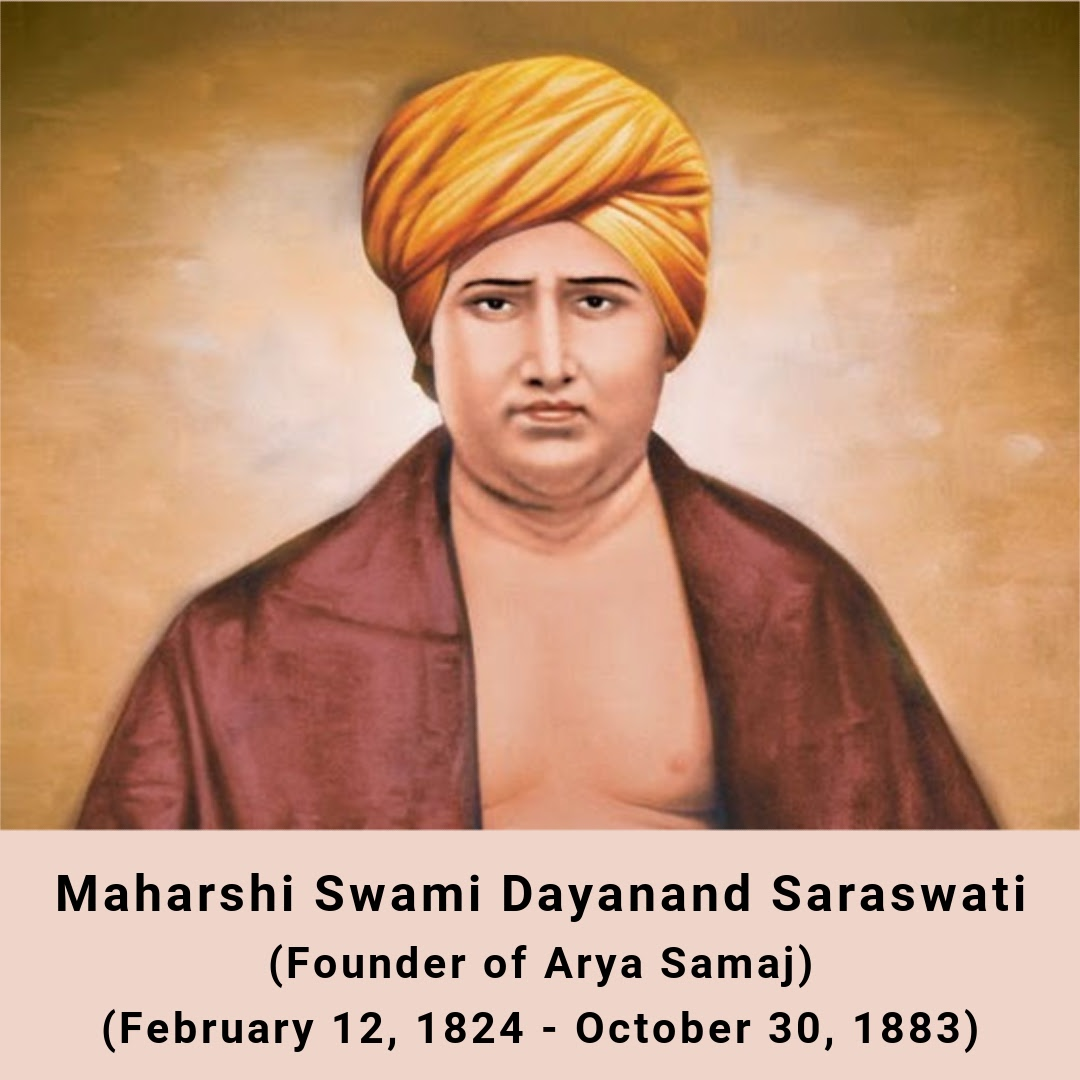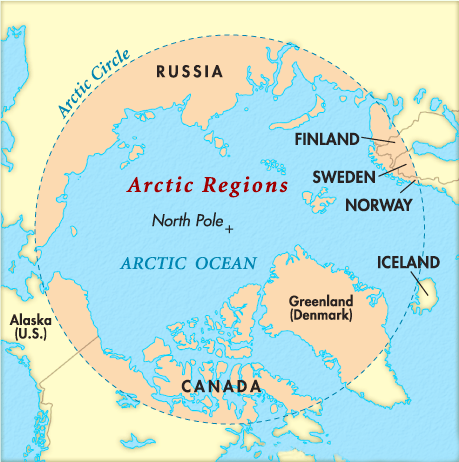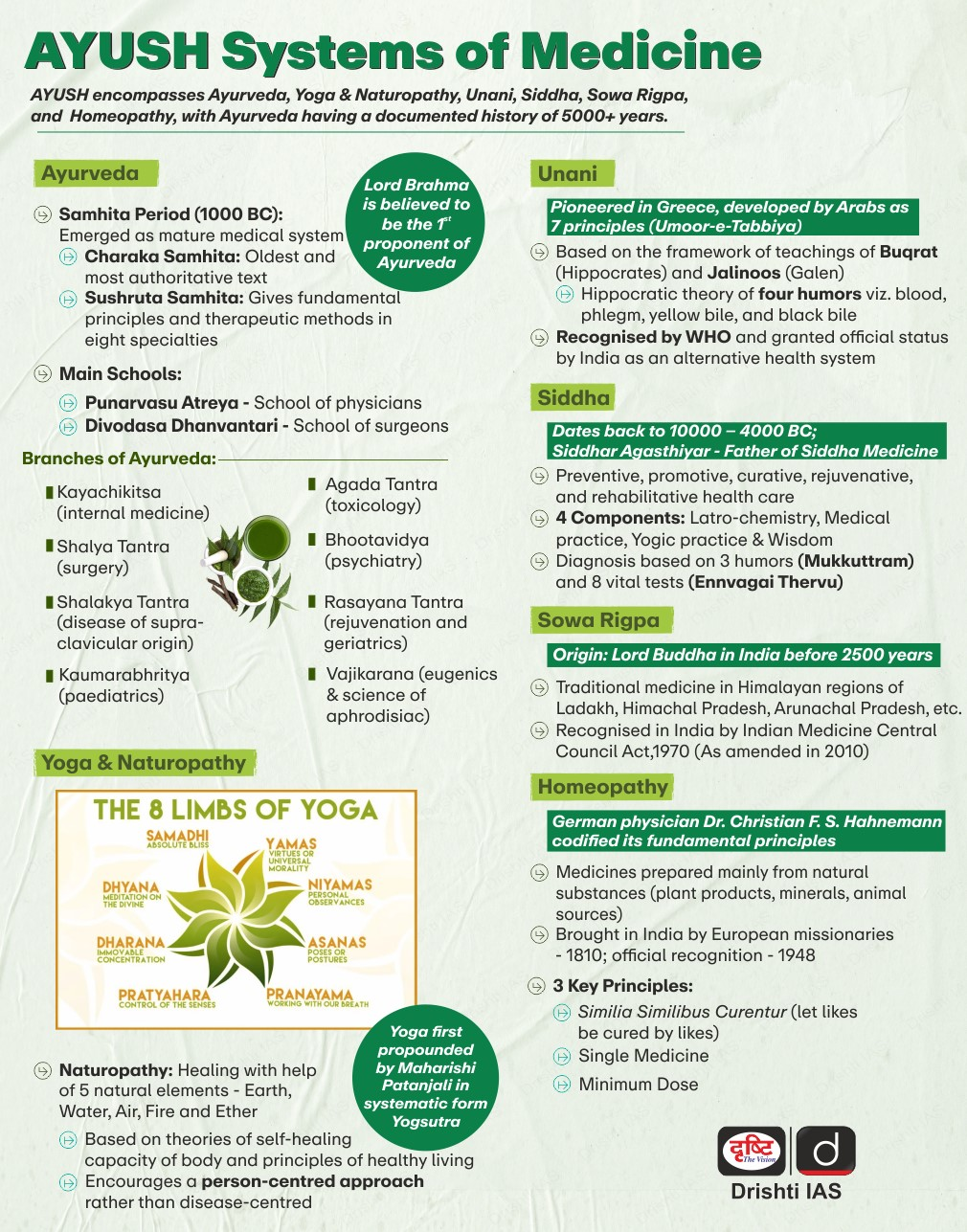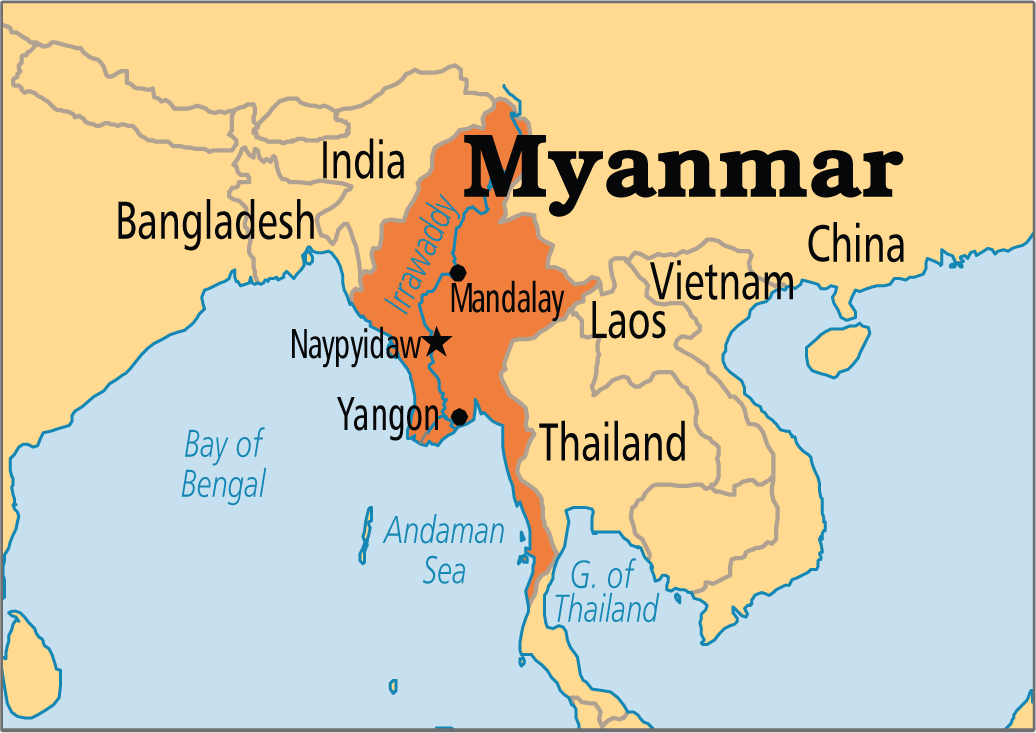Governance
Marital Rape in India
For Prelims: High Court (HC), Supreme Court (SC), BNS, Section 377, Domestic Violence Act, 2005, Articles 14 (equality), 15 (non-discrimination), and 21 (right to life and dignity), POCSO Act, 2012.
For Mains: Legal and judicial status of marital rape in India. Debate over criminalising marital rape.
Why in News?
In the Gorakhnath Sharma vs State of Chhattisgarh Case, 2019, the Chhattisgarh High Court (HC) ruled that a husband cannot be charged with rape or unnatural sex with his wife if she is above 15 years of age, regardless of consent.
- It relied on Exception 2 under Section 375 of IPC, which exempts a husband from rape charges if the wife is not below 15 years.
- In another development, the Supreme Court (SC) is hearing petitions to criminalize marital rape, backed by women's rights activists.
What is Marital Rape?
- About: Marital rape is a type of intimate partner violence that involves forced sex or sexual assault between spouses. It is not a crime in India.
- However, If a couple is married, but living separately, then the husband is guilty of rape if his wife does not consent to sexual intercourse.
- Legal Stance:
- IPC: Section 375 (2) states that sexual intercourse or sexual acts between a man and his wife who is not under 15 years of age is not rape.
- BNS retains immunity for husbands in cases of marital rape but the age of consent has been increased from 15 to 18 years complying with the SC judgement in the Independent Thought vs UoI Case, 2017.
- Domestic Violence Act, 2005: While marital rape is not a crime, a woman can seek relief under the Domestic Violence Act, 2005 for sexual abuse, humiliation, or violation of dignity.
- IPC: Section 375 (2) states that sexual intercourse or sexual acts between a man and his wife who is not under 15 years of age is not rape.
- Judicial Rulings on Marital Rape:
- Independent Thought vs UoI Case, 2017: The SC struck down Exception 2 to Section 375 IPC (Section 63 of BNS) for wives aged 15-18, making intercourse with minor wives (under 18) rape.
- It ruled the exception arbitrary and unconstitutional, violating Articles 14 (equality), 15 (non-discrimination), and 21 (right to life and dignity).
- The court ruled that POCSO Act, 2012 prevails over IPC, making sex with a minor (under 18) rape, even if she is married.
- KS Puttaswamy Case, 2017: It stressed the importance of sexual autonomy for individuals as an intrinsic part of privacy.
- Other Important Rulings:
- In 2023, the Bombay HC ruled that consensual sex with a minor wife is rape, rejecting the defence of consent in such cases.
- In 2024, the Madhya Pradesh HC ruled that unnatural sex with a wife is not rape and that a wife’s consent is irrelevant in such matters.
- Independent Thought vs UoI Case, 2017: The SC struck down Exception 2 to Section 375 IPC (Section 63 of BNS) for wives aged 15-18, making intercourse with minor wives (under 18) rape.
- Judicial Ruling on unnatural sex:
- Navtej Singh Johar Case, 2018: The SC partially struck down Section 377 IPC, decriminalizing consensual homosexuality.
- Government’s Stance: The Ministry of Home affairs told the SC that while a husband cannot violate his wife's consent, calling it "rape" is excessively harsh and disproportionate.
What are Arguments For and Against Criminalizing Marital Rape?
|
For Criminalization |
Against Criminalization |
|
Violation of Autonomy: Every individual has the right to refuse sex, even in marriage. |
Threat to Marriage: Criminalization may destabilize marital relationships. |
|
SC Stand: Independent Thought Case, 2017 recognized marital rape for minors, reinforcing consent. |
Existing Laws Sufficient: Domestic violence laws already provide protection from sexual harassment. |
|
Equality Before Law: Exempting husbands violates constitutional rights (Articles 14, 15, 21). |
Potential Misuse: May lead to false accusations in divorce and custody cases. |
|
POCSO & Child Protection: Non-consensual sex is a crime for minors; should apply to married adults. |
Social & Cultural Norms: Marriage traditionally includes sexual relations, making legal change complex. |
|
Legal Contradictions: BNS retains immunity for husbands despite removing Section 377. |
Legislative Domain: The government argues that the legislature, not courts, should decide. |
Criminalisation of Marital Rape Around the World
- Marital rape is explicitly criminalized in 77 countries, allowed cases against spouses under general provisions in 74, and decriminalized or granted immunity in 34.
- Marital rape is illegal in 50 American States, 3 Australian States, New Zealand, Canada, Israel, France, Sweden, Denmark, Norway, Soviet Union, Poland and Czechoslovakia and several others.
- The UK, from which the IPC is largely derived, removed the marital rape exception in 1991.
What can be Done to Curb Marital Rape?
- Jaya Jaitley Committee Recommendations: Raise the minimum marriage age for women from 18 to 21 to promote gender equality, improve maternal health, and reduce the risk of non-consensual sex (marital rape).
- Legislative Reforms: Amend the BNS to remove the marital rape immunity and recognize spousal consent as a legal necessity.
- Alternative Legal Frameworks: Expand the Domestic Violence Act, 2005 to explicitly include marital sexual violence, offering stronger civil remedies like restraining orders and compensation.
- Global Best Practices: India can study UK, Canada, and Australia’s laws to develop a culturally adaptive marital rape law, aligning with global human rights while considering socio-cultural realities.
Conclusion
The debate on marital rape highlights tensions between personal autonomy, legal equality, and socio-cultural norms. While many countries have criminalized it, India retains legal immunity for husbands. Judicial rulings emphasize consent and dignity, but legislative reluctance persists. The issue requires legal clarity, balancing individual rights with societal concerns.
|
Drishti Mains Question: Critically analyze the arguments for and against criminalizing marital rape in India. |
UPSC Civil Services Examination Previous Year Question (PYQ)
Mains
Q. Is the National Commission for Women able to strategize and tackle the problems that women face in both public and private spheres? Give reasons in support of your answer. (2017)
Q. We are witnessing increasing instances of sexual violence against women in the country. Despite existing legal provisions against it, the number of such incidences is on the rise. Suggest some innovative measures to tackle this menace. (2014)

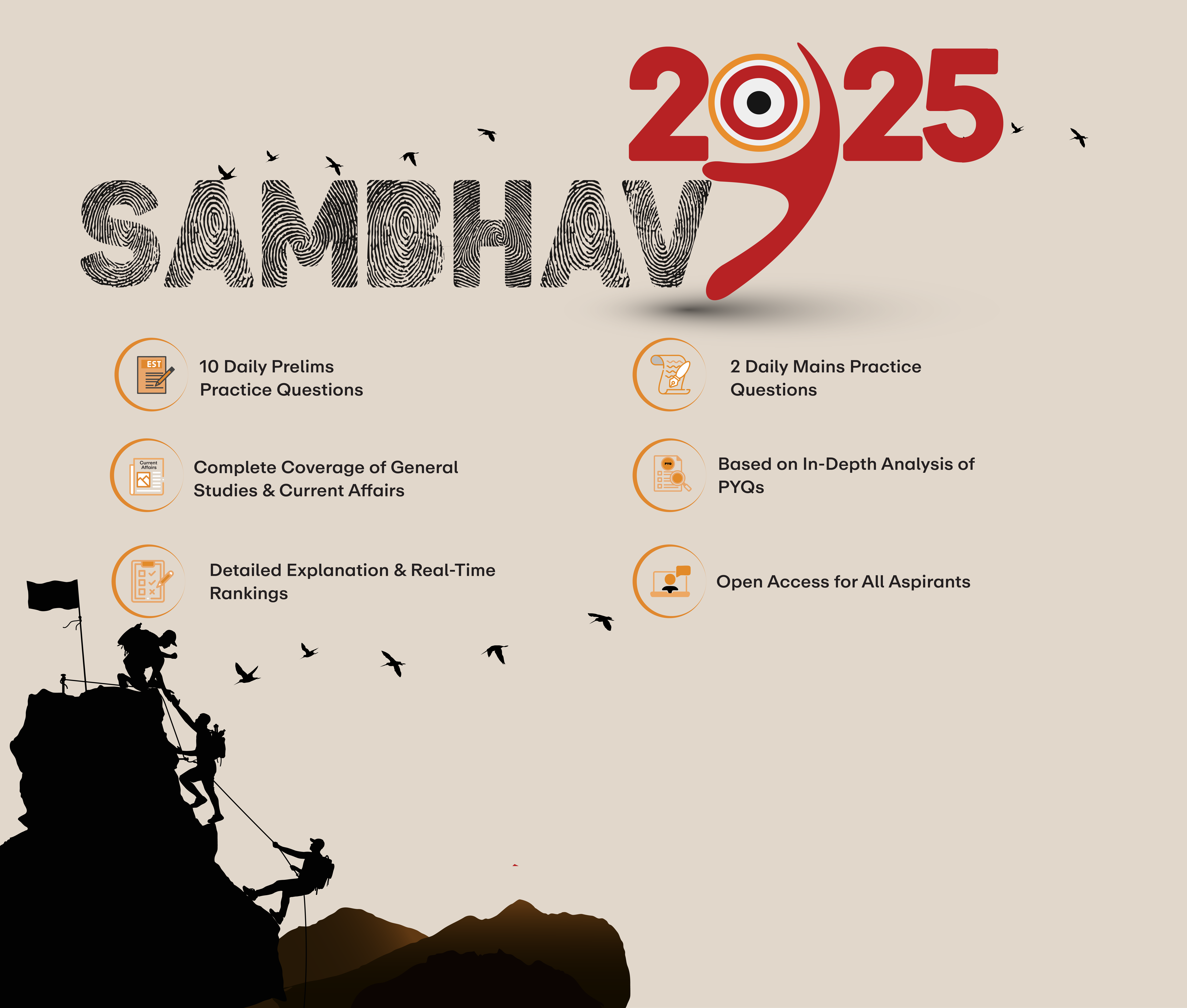
Internal Security
Evolving Warfare and Need for India's Defence Transformation
For Prelims: Chief of Defence Staff, Quantum computing, Make in India, Advanced Towed Artillery Gun System, SRIJAN portal, Defence Research and Development Organisation
For Mains: India's Defence Modernization and Indigenous Capabilities, 21st Century Warfare
Why in News?
At Aero India 2025, Chief of Defence Staff (CDS) General Anil Chauhan emphasized the need for the Indian Army to evolve to adapt the emerging warfare trends, stressing the importance of holistic transformation beyond technological advancement.
Aero India
- Aero India, organized by the Defence Exhibition Organisation, Ministry of Defence, is India’s premier biennial aerospace and Defence exhibition held at Yelahanka Air Force Station, Bengaluru.
- Aero India features global aero vendors and aerobatic displays by the Indian Air Force, it was first held in 1996.
How is Warfare Evolving in the 21st Century?
- Multi-Dimensional Conflicts: Warfare now extends beyond land, sea, and air to cyberspace, the electromagnetic spectrum, and outer space.
- The emergence of unmanned platforms and autonomous weapons is redefining battlefield engagements.
- Rise of Non-Contact Warfare: Precision-guided munitions, cyberattacks, and electronic warfare (EW) have reduced direct combat engagements.
- The use of long-range missiles, drones, and AI-powered systems allows adversaries to strike without direct confrontation.
- Technologies in Warfare: The US, China, and Russia are at the forefront of advancing Quantum computing, Artificial intelligence (AI), and hypersonic weapons that are transforming war strategies and are set to redefine combat scenarios, potentially leading to machine-vs-machine warfare.
- Additionally, sixth-generation fighter jets and autonomous weapons systems are expected to play a crucial role in future battles.
- However, the exact impact of these technologies remains uncertain, necessitating adaptable military strategies.
- Perpetual and Irrational Wars: Earlier, wars were finite with political negotiations following combat.
- Today, conflicts have become prolonged, hybrid in nature (involving a mix of conventional warfare, cyber operations, and information warfare), and driven by technological asymmetry (uneven distribution of technological capabilities between different countries).
Why Does the Indian Defence Need a Holistic Transformation?
- Evolving Security Challenges: India faces a two-front threat from China and Pakistan, with persistent border tensions (e.g., Eastern Ladakh, Doklam) and Pakistan’s proxy war in Jammu & Kashmir.
- Their strategic collaboration, including China Pakistan Economic Corridor (CPEC), raises the risk of a collusive two-front war.
- China’s growing presence in the Indian Ocean requires India to strengthen its maritime power and out-of-area contingency (OOAC) operations.
- Structural and Doctrinal Limitations: India's Defence faces structural challenges, including the Indian Army's dominance in Defence planning and a large standing force of over 1.4 million, straining the budget and hindering modernization.
- India's doctrinal limitations, marked by reactive responses to threats (e.g., Kargil War, Mumbai 26/11), highlight the need for proactive deterrence and updated operational doctrines for enhanced security.
- Modernization Deficiencies: India’s Defence inventory is outdated, affecting operational efficiency. The Indian Army still uses T-72 tanks (over 40 years old) and Bofors howitzers from the 1980s, despite modern advancements.
- Despite the 'Make in India' initiative, India remains the world's largest arms importer (9.8% of global imports from 2019 to 2023), relying on Russia, France, and the U.S. for advanced weaponry.
- This is due to delays in modern equipment induction, such as Tejas fighters and Future Infantry Combat Vehicles.
- Lack of synergy between the Indian Army, Air Force, and Navy hinders integrated air-land-sea warfare and expeditionary strategies.
- Budgetary Constraints: India's 2025-26 Defence budget is USD 78.7 billion, very less compared to China's USD 236 billion in 2023.
- Since 2001, India’s Defence sector has attracted only Rs 5,077 crore in Foreign Direct Investment (FDI), despite the FDI limit being raised to 74% via the Automatic Route and up to 100% through the Government Route.
- Manpower costs (salaries and pensions) consume a large portion of the Defence budget, leaving little for capital acquisitions. Balancing Defence needs with financial constraints remains a challenge for India.
India’s Progress in Defence Modernisation
- As part of the Make in India initiative, India has developed major defence systems such as the Dhanush Artillery Gun System, Advanced Towed Artillery Gun System (ATAGS), Main Battle Tank (MBT) Arjun, Light Combat Aircraft (LCA) Tejas, Fifth-generation (5G) Fighter Aircraft, submarines, frigates, corvettes, and the recently commissioned INS Vikrant, showcasing the nation’s growing defence capabilities.
- The Defence Acquisition Procedure (DAP) 2020 boosted defence production to Rs 1.27 lakh crore in 2023-24, with a target of Rs 3 lakh crore by 2029, positioning India as a global defence manufacturing hub.
- India's defence exports soared from Rs 686 crore in 2013-14 to Rs 21,083 crore in 2023-24, a 30-fold increase in a decade.
- The industrial licensing process has been streamlined, and the iDEX scheme encourages startups and MSMEs to innovate in defence. The SRIJAN portal aids indigenization ("Make" procedure), while Defence Industrial Corridors in Uttar Pradesh and Tamil Nadu boost regional manufacturing.
- Defence R&D is now open to private players for enhanced collaboration.
What Steps Can India Take to Align with Emerging Warfare Trends?
- Indigenous Defence Innovation: Increasing funding for Defence Research and Development Organisation technology clusters, private defence startups, and academia to develop cutting-edge military technologies.
- Technology in Defence: AI-powered autonomous drones, decision-making systems, and cyber warfare tools need faster integration. Quantum communication & cryptography will secure India’s strategic military assets.
- A unified command structure will improve strategic coordination and operational efficiency.
- Cyber and Electromagnetic Warfare Force: Establishing dedicated Cyber and Electromagnetic Commands to counter digital warfare threats and expanding NavIC satellite surveillance and electronic warfare capabilities for a tactical advantage.
- Military Training and Strategy: Revising military training to incorporate AI, robotics, and asymmetric warfare strategies. Conducting joint military exercises with global tech-driven armies like the US, Israel, and France.
- Enhancing India’s Global Defence Standing: Competing with Western military standards requires investment in indigenous defence production and innovation.
- Aligning with emerging North Atlantic Treaty Organization (NATO) and QUAD military doctrines will help India prepare for global security challenges.
- Future-Ready Military Strategy: India’s future-ready military strategy should balance land, sea, air, cyber, and space capabilities. Leveraging the planned Bharatiya Antariksha Station (BAS) will enhance space surveillance and communication.
- To stay ahead, India must prepare for emerging threats, including "robot warfare," "drone battles," "autonomous vehicle engagements," and "mechanized clashes."
Conclusion
India's defence transformation demands a holistic approach, balancing technological advancements with strategic adaptability and aligning with emerging warfare trends, India can enhance its global defence standing and ensure national security.
|
Drishti Mains Question: In the era of modern warfare evolving into a multi-domain battle. Discuss the key challenges and necessary reforms for the Indian military to adapt to emerging threats. |
UPSC Civil Services Examination, Previous Year Questions (PYQs)
Prelims
Q. What is “Terminal High Altitude Area Defence (THAAD)”, sometimes seen in the news? (2018)
(a) An Israeli radar system
(b) India’s indigenous anti-missile programme
(c) An American anti-missile system
(d) A defence collaboration between Japan and South Korea.
Ans: (c)
Q. In the context of the Indian defence, what is ‘Dhruv’? (2008)
(a) Aircraft-carrying warship
(b) Missile-carrying submarine
(c) Advanced light helicopter
(d) Intercontinental ballistic missile
Ans: (c)
Mains
Q. Foreign Direct Investment (FDI) in the defence sector is now set to be liberalized: What influence this is expected to have on Indian defence and economy in the short and long run? (2014)


Indian History
Birth Anniversary of Swami Dayanand Saraswati
For Prelims: Maharishi Dayanand Saraswati Jayanti, Arya Samaj
For Mains: Maharishi Dayanand Saraswati and his Contribution, Important Personalities, Guiding principles of the Arya Samaj.
The Prime Minister paid tributes to Swami Dayanand Saraswati (1824-1883) on his 201st birth anniversary on 12th February 2025. He was a great thinker, ardent nationalist and founder of the Arya Samaj.
Who was Maharishi Dayanand Saraswati?
- About:
- Maharishi Dayanand Saraswati was a prominent social reformer, philosopher, and religious leader of the 19th century.
- Birth and Early Life:
- He was born as Mool Shankar Tiwari on 12th February 1824 in Tankara, Gujarat, into an orthodox Brahmin family and his parents, Lalji Tiwari and Yashodabai, were devout followers of Hindu traditions.
- At a young age, he developed a deep interest in spiritual knowledge and questioned idol worship, rituals, and superstitions.
- Renouncing worldly life at 19, he wandered as an ascetic for nearly 15 years (1845–1860) in search of truth.
- He studied under Swami Virjanand in Mathura, who urged him to work towards purging Hinduism of corrupt practices and restoring the true meaning of the Vedas.
- Philosophy and Social Reforms:
- He opposed idol worship, untouchability, caste-based discrimination, polygamy, child marriage, and gender inequality.
- He believed in a classless and casteless society where caste was based on merit rather than birth.
- He strongly advocated for women's education, widow remarriage, upliftment of depressed classes, Shuddhi movement for reconversion and the abolition of Sati and child marriage.
- He emphasized "Back to the Vedas", arguing that true Hinduism is rooted in the Vedas, which uphold rationality, equality, and social justice.
- His ideas were compiled in his seminal work, Satyarth Prakash (The Light of Truth), where he criticized social evils like infanticide and dowry and advocated Vedic wisdom.
- Educational Contributions:
- He advocated for modern, scientific, and Vedic education while opposing the British colonial education system.
- Inspired the establishment of gurukulas, Girl’s Gurukulas and Dayanand Anglo-Vedic (DAV) schools and colleges in 1886, with the first DAV school set up in Lahore under Mahatma Hansraj.
- Role in Nationalist Movement:
- He was the first to give the call for "Swaraj" in 1876, influencing later leaders like Bal Gangadhar Tilak, Lala Lajpat Rai, and Mahatma Gandhi.
- He promoted Swadeshi (economic self-reliance), cow protection, and Hindi as a national language.
- Legacy:
- Swami Dayanand Saraswati faced resistance from the orthodox sections of society for his efforts in socio-religious reform. However, he left behind a lasting legacy through institutions like Arya Samaj and DAV schools, which continue to have a positive impact on society.
What is Arya Samaj?
- About:
- Arya Samaj (Society of nobles) is a Hindu reform movement that promotes the Vedas as the ultimate source of knowledge and truth.
- It was founded by Swami Dayanand Saraswati in 1875.
- Core Beliefs and Principles:
- Emphasizes Vedic authority and rejects idol worship, priestly rituals, animal sacrifice, social evils and superstitions.
- Supports karma (law of deeds), samsara (cycle of rebirth), and the sanctity of the cow.
- Promotes Vedic fire rituals (havan/yajna) and samskaras (sacraments).
- Social Reforms and Contributions:
- Advocated female education, inter-caste marriage, and widow remarriage.
- Established schools, orphanages, and widow homes.
- Played a role in famine relief and medical aid.
- Led the Shuddhi Movement to reconvert those who had embraced other religions.
What were the Major Social and Religious Reform Movements of the 19th Century?
UPSC Civil Services Examination, Previous Year Questions (PYQs)
Q. Which among the following events happened earliest? (2018)
(a) Swami Dayanand established Arya Samaj.
(b) Dinabandhu Mitra wrote Neel Darpan.
(c) Bankim Chandra Chattopadhyay wrote Anandmath.
(d) Satyendranath Tagore became the first Indian to succeed in the Indian Civil Services Examination.
Ans: (b)


Important Facts For Prelims
Arctic Warming
Why in News?
The temperatures at the North Pole (Arctic region) surged more than 20 degrees Celsius above the average temperature, raising concerns about the rapid warming of the region and its global implications.
What are Key Facts About Arctic Warming?
- About: It refers to the rapid increase in temperatures in the Arctic region (area north of 66.5° N latitude), also known as Arctic Amplification.
- Since 1979, the Arctic has warmed four times faster than the global average.
- Causes: A deep low pressure system over Iceland brought warm air from lower latitudes, causing an unusual temperature spike in the Arctic winter.
- Abnormally high North-East Atlantic ocean temperatures intensified warming, with wind patterns carrying extra heat to the Arctic.
- Reduced albedo effect leads to absorption of more heat and raising temperatures.
- The Arctic's weak convection currents trap heat from greenhouse gases near the surface, intensifying warming.
- Potential Consequences: More ice melt could lead to coastal flooding and loss of land.
- Arctic temperature shifts can disrupt jet streams (fast-moving, narrow bands of strong winds in the upper troposphere) impacting global rainfall, storms, and extreme weather.
- Species like polar bears and seals depend on ice for survival, making them vulnerable to habitat loss.
Note: Arctic Circle is an imaginary line located at approximately 66.5° North latitude, marking the southern boundary of the Arctic region.
- It includes parts of Canada, Russia, Greenland, Norway, Sweden, Finland, Iceland, and the United States (Alaska).
India in Arctic Region
- India engaged with the Arctic by signing the Svalbard Treaty in 1920 and launched its Arctic research program in 2007.
- It established the Himadri research base in Svalbard (2008, Norway) and gained Arctic Council observer status in 2013.
- In 2022, India announced its Arctic policy, with the National Centre for Polar and Ocean Research as the nodal agency.
UPSC Civil Services Examination Previous Year Question (PYQ)
Prelims
Q. Which of the following statements is/are correct about the deposits of ‘methane hydrate’? (2019)
- Global warming might trigger the release of methane gas from these deposits.
- Large deposits of ‘methane hydrate’ are found in Arctic Tundra and under the sea floor.
- Methane in the atmosphere oxidizes to carbon dioxide after a decade or two.
Select the correct answer using the code given below.
(a) 1 and 2 only
(b) 2 and 3 only
(c) 1 and 3 only
(d) 1, 2 and 3
Ans: (d)
Q. Consider the following countries: (2014)
- Denmark
- Japan
- Russian Federation
- United Kingdom
- United States of America
Which of the above are the members of the ‘Arctic Council’?
(a) 1, 2 and 3
(b) 2, 3 and 4
(c) 1, 4 and 5
(d) 1, 3 and 5
Ans: (d)

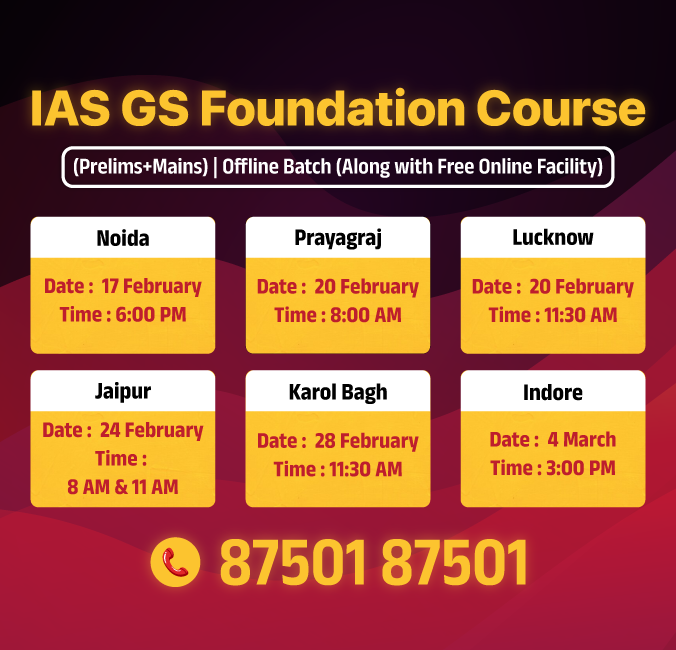
Important Facts For Prelims
Asian Fisheries and Aquaculture Forum
Why in News?
The Union Minister of Fisheries, Animal Husbandry & Dairying inaugurated the 14th Asian Fisheries and Aquaculture Forum (AFAF) at New Delhi.
What is the Asian Fisheries and Aquaculture Forum (AFAF)?
- About:
- AFAF is a global fisheries and aquaculture conference held every 3 years by the Asian Fisheries Society (AFS).
- AFS, a non-profit scientific body, was founded in 1984 in Kuala Lumpur, Malaysia.
- It brings together scientists, researchers, and industry experts to discuss challenges, trends, and innovations in the sector.
- The forum encourages international cooperation to develop better practices for the future of fisheries and aquaculture.
- AFAF is a global fisheries and aquaculture conference held every 3 years by the Asian Fisheries Society (AFS).
- Headquarters: Kuala Lumpur, Malaysia.
- India as Host: India hosted AFAF for the 2nd time (1st : 8th AFAF in Kochi in 2007).
- Organisers:
- AFS in collaboration with ICAR, the Department of Fisheries, GoI, and Asian Fisheries Society Indian Branch (AFSIB) , Mangalore.
- Theme for 14th AFAF: “Greening the Blue Growth in Asia-Pacific”.
What is the State of India’s Fisheries Sector?
- India is the 3rd largest fish producer and 2nd largest aquaculture nation in the world after China.
- India ranks 4th globally in fish exports, contributing 7.7% to global fish production.
- Top fish-producing states: Andhra Pradesh, West Bengal, Karnataka.
- Inland fisheries account for over 75% of total output.
- Government's Initiatives:
UPSC Civil Services Examination, Previous Year Question (PYQ)
Prelims
Q. Which one of the following is a filter feeder? (2021)
(a) Catfish
(b) Octopus
(c) Oyster
(d) Pelican
Ans: (c)
Q. Under the Kisan Credit Card scheme, short-term credit support is given to farmers for which of the following purposes? (2020)
- Working capital for maintenance of farm assets
- Purchase of combine harvesters, tractors and mini trucks
- Consumption requirements of farm households
- Post-harvest expenses
- Construction of family house and setting up of village cold storage facility
Select the correct answer using the code given below:
(a) 1, 2 and 5 only
(b) 1, 3 and 4 only
(c) 2, 3, 4 and 5 only
(d) 1, 2, 3, 4 and 5
Ans: (b)


Rapid Fire
India Energy Week 2025
At India Energy Week 2025, India signed multiple strategic agreements and MoUs aimed at enhancing energy security, diversifying supply sources.
- India Energy Week: India Energy Week 2025, held in New Delhi organized under the patronage of the Ministry of Petroleum and Natural Gas and jointly by the Federation of Indian Petroleum Industry (FIPI), it features over 700 exhibitors from across the global energy sector.
- The event emphasizes energy access, security, sustainability, and decarbonization efforts.
- FIP is an apex Society of entities in the hydrocarbon sector and acts as an industry interface with the Government.
- Key MoUs Signed: Bharat Petroleum Corporation Ltd (BPCL) partnered with Petrobras (Brazil) to import up to 6 million barrels of crude, diversifying India's oil imports.
- BPCL and Eco Wave Power (Israel) to set up India’s first wave energy pilot in Mumbai.
- To strengthen India’s transition to a natural gas-based economy, Indian Oil Corporation (IOCL) and ADNOC (UAE) signed a USD 7 billion contract for 1.2 million metric tons per annum (MMTPA) liquefied natural gas (LNG) over 14 years starting 2026.
Read more: Tapping Renewable Energy Potential in India


Rapid Fire
International Conference on Unani Medicine
The President inaugurated an international conference on Unani medicines , hosted by the Central Council for Research in Unani Medicine (CCRUM) on Unani Day (11th February).
- Its theme was "Innovations in Unani Medicine for Integrative Health Solutions – A Way Forward."
- Established in 1978, CCRUM is an autonomous body under the Ministry of Ayush and serves as the apex government organization for research in Unani medicine.
- About Unani Medicine: It is a traditional healing system that originated in Greece and was popularised by Arab and Persian scholars.
- It is based on the concept of balance in the body's four humors i.e., blood, phlegm (mucus), yellow bile, and black bile, that is central to diagnosing and treating illnesses.
- Disease occurs when the humors are out of balance, and treatment aims to restore this balance through various methods.
Read More: First All-India Survey on AYUSH


Rapid Fire
FMR Along the India-Myanmar Border
The revised Free Movement Regime (FMR) has led to the activation of 22 border gates out of the 43 planned crossing points along the India-Myanmar border, aimed at regulating movement while maintaining border security.
- India's 1,643-km border with Myanmar runs through Arunachal Pradesh (520 km), Nagaland (215 km), Manipur (398 km), and Mizoram (510 km). 1,472 km of the border has been demarcated.
- FMR: Introduced in 1968 to facilitate movement due to ethnic and familial ties across the largely unfenced northeastern border.
- The free movement limit was reduced from 40 km to 16 km in 2004 and is now 10 km.
- Border residents can travel without a visa or passport but require a QR code-enabled border pass. Biometric data is recorded and uploaded to a centralized portal to check against a negative list.
- Assam Rifles responsible for issuing border passes and conducting initial security verification. Border pass validity is up to 7 days.
- Assam Rifles: Oldest paramilitary force in India, established in 1835. Evolved from protecting British Tea estates to maintaining internal security in the Northeast and guarding the Indo-Myanmar Border.
- Assam Rifles played key roles in the Sino-India War (1962), and were known as 'Sentinel of the North East' and 'Friend of the Hill People'.
- Headquarters: Directorate General of Assam Rifles in Shillong.
Read more: Free Movement Regime


Rapid Fire
Revised MIS Guidelines
The government has revised Market Intervention Scheme (MIS) guidelines to encourage more States to implement MIS.
- MIS supports perishable crops (fruits, vegetables, spices, etc.) that are not covered under MSP, preventing distress sales during price drops from excess production.
- Revised Provisions of MIS:
- Made MIS a component of the integrated scheme of PM-AASHA.
- MIS is activated only if market prices fall by at least 10% from the previous normal year.
- The coverage limit for procurement has been raised from 20% to 25% of total production.
- Instead of physical procurement, states can transfer the price difference between the Market Intervention Price (MIP) and the selling price directly to farmers' bank accounts.
- NAFED and NCCF will reimburse storage and transport costs for TOP crops (tomato, onion and potato) when price gaps exist between producing and consuming states.
- FPOs, FPCs, and state-nominated agencies will handle procurement, storage, and transport to stabilize market fluctuations.
Read More: Measures for Farmers' Welfare



